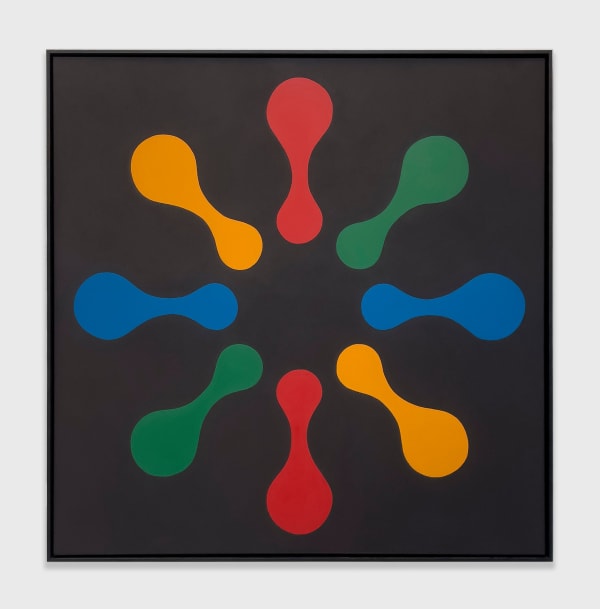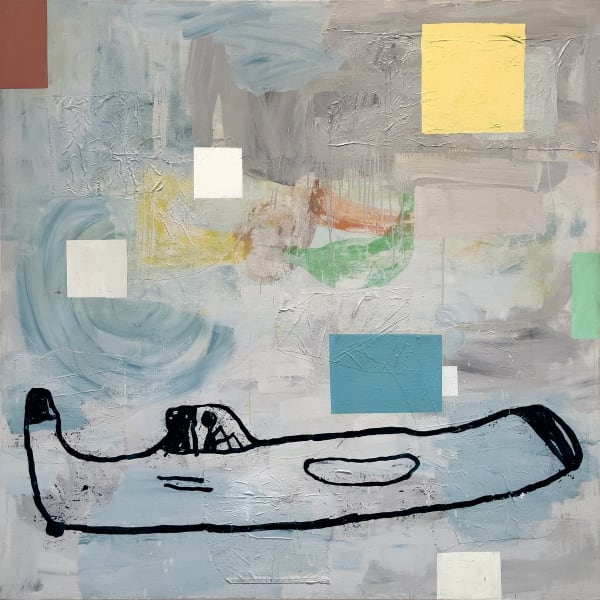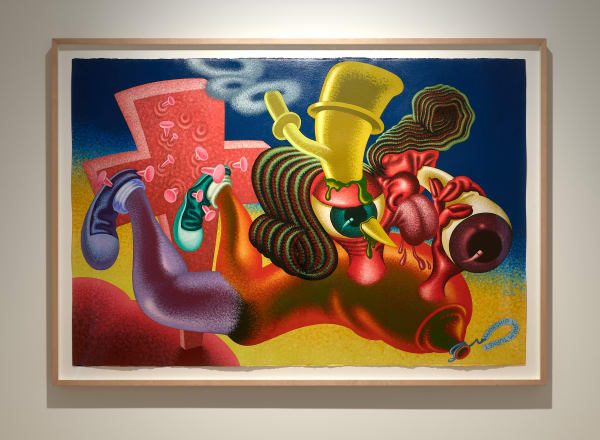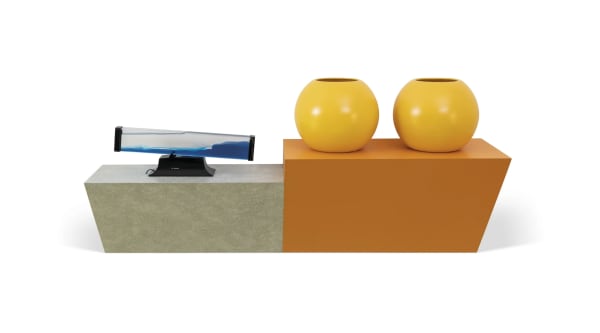In the history of the United States, the year 1986 is remarkable for its major developments in science, technology and mass culture, marking a period of breakthrough and upheaval. IBM unveiled the very first laptop computer, the protocol for what would later become e-mail was designed, Halley's Comet became the first to be observed in detail by spacecraft and the Human Genome Project launched.
At the same time, there emerged a growing distrust in these forms of progress and the governments who championed them, triggered by events such as the Space Shuttle Challenger explosion, the Chernobyl nuclear disaster, and the escalating AIDS crisis. This occurred in the midst of the 'yuppie decade', in which American wealth and consumerism reached new heights, and the wildly popular Oprah Winfrey show became emblematic of an increased obsession with celebrity and a merging of the public and private realms.
Made in 1986, the works in this exhibition were also created at the threshold of a new era in the art world, which was set to become increasingly global and high-powered. Biennales and international art fairs emerged across all continents, challenging the dominance of Europe and the United States. While the artists included here responded to national and global developments, they were mostly embedded in the preeminent New York scene. Five of them first showed together as part of the 'neo-geometric conceptualist movement' that emerged in the early 1980s, with the East Village at its center. Including Peter Halley, Ross Bleckner, Haim Steinbach, Philip Taaffe and Allan McCollum, this group of artists directly responded to what Peter Halley called the 'geometricisation of modern life', a world increasingly organised through mechanisation and commercialisation.
For many critics and art historians, 1986 marks a turning point, ushering in a globally connected contemporary art world enabled by new communication and financial technologies. The art market experienced growth at exponential levels, with auctions and galleries setting records for contemporary art, and artworks became an internationally traded commodity. As the artists in this exhibition perhaps anticipated, the difference between an artist and the art they were creating was collapsing: "works of art are treated like subjects and artists design themselves like objects", Isabelle Graw writes of this period. The legacy of the year 1986, and of the artists in this exhibition, is the continuous interrogation of that relationship, keeping its intriguing complexities intact. Many of their concerns continue to resonate today, as they explored what art could be in a year of immense economical, political and technological change.
 Ross BlecknerBrothers' Swords, 1986oil on 2 adjoined canvases274 x 213 cm
Ross BlecknerBrothers' Swords, 1986oil on 2 adjoined canvases274 x 213 cm Philip TaaffeSignal, 1986oil on canvas152.5 x 152.5 x 3.9 cm
Philip TaaffeSignal, 1986oil on canvas152.5 x 152.5 x 3.9 cm Donald BaechlerAbstract Painting with Spaceship, 1986acrylic and fabric collage on canvas190.5 x 190.5 cm
Donald BaechlerAbstract Painting with Spaceship, 1986acrylic and fabric collage on canvas190.5 x 190.5 cm Peter HalleyBlack Cell with Underground Sequence, 1986three attached panels
Peter HalleyBlack Cell with Underground Sequence, 1986three attached panels Peter HalleyBlack Cells with Conduit, 1986acrylic fluorescent acrylic Flashe and Roll-a-Tex on canvas162.5 x 289.5 x 8.5 cm
Peter HalleyBlack Cells with Conduit, 1986acrylic fluorescent acrylic Flashe and Roll-a-Tex on canvas162.5 x 289.5 x 8.5 cm Allan McCollumPerfect Vehicles (five vessels), 1986Enameled hydrocal50 x 21 x 21 cm
Allan McCollumPerfect Vehicles (five vessels), 1986Enameled hydrocal50 x 21 x 21 cm Robert MangoldRed Ellipse/Red Frame, 1987acrylic and graphite on canvas241 x 335 cm
Robert MangoldRed Ellipse/Red Frame, 1987acrylic and graphite on canvas241 x 335 cm Bruce NaumanUntitled (Crossbeams), 1986cast iron beams with grit blast finish222 x 217 cm
Bruce NaumanUntitled (Crossbeams), 1986cast iron beams with grit blast finish222 x 217 cm Peter SaulWorship Warm Turkey, 1986acrylic on paper103 x 152 cm
Peter SaulWorship Warm Turkey, 1986acrylic on paper103 x 152 cm Haim SteinbachTogether Naturally, 1986Shelf sculpture wood ceramic and plastic60 x 107 x 38 cm
Haim SteinbachTogether Naturally, 1986Shelf sculpture wood ceramic and plastic60 x 107 x 38 cm Haim SteinbachTogether naturally (tri-part Scandinavian ash) V2, Executed in 1986Plastic laminated wood shelf; ceramic vase; 10 wood trays61 x 107 x 36.8 cm
Haim SteinbachTogether naturally (tri-part Scandinavian ash) V2, Executed in 1986Plastic laminated wood shelf; ceramic vase; 10 wood trays61 x 107 x 36.8 cm Haim SteinbachDelightfully Reproduced, 1986plastic laminated wood shelf, plastic wave machine and two ceramic vases
Haim SteinbachDelightfully Reproduced, 1986plastic laminated wood shelf, plastic wave machine and two ceramic vases John ArmlederSchwarzer Punkt (Black dot), 1986enamel on perfored masonite122 x 122 cm
John ArmlederSchwarzer Punkt (Black dot), 1986enamel on perfored masonite122 x 122 cm Sol LeWittDouble Asymmetrical Pyramids, 1986Gouache et mine de plomb sur papier55 x 77 cm
Sol LeWittDouble Asymmetrical Pyramids, 1986Gouache et mine de plomb sur papier55 x 77 cm





















